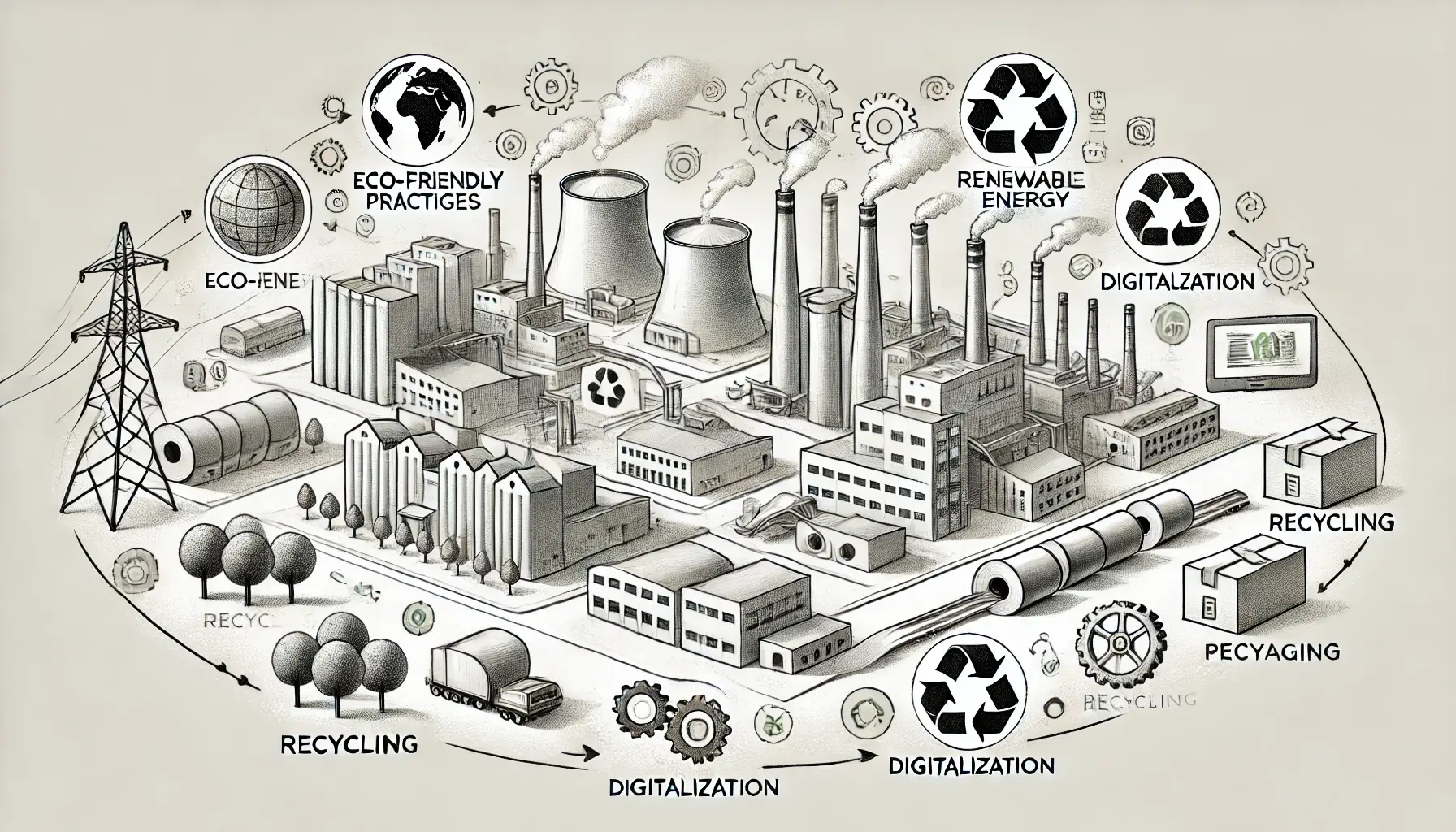The global pulp and paper industry is dominated by some of the largest and most advanced paper mills, each offering unique strengths and strategic advantages that make them industry leaders. Here’s a look at the top mills around the world and what sets them apart.
1. International Paper (USA)
Strategic Advantage: Scale and Innovation
International Paper is the largest paper and packaging company in the world. Its strategic advantage lies in its massive scale of operations and a strong focus on innovation. With a wide range of products including containerboard, corrugated packaging, and pulp, the company serves industries like food, retail, and e-commerce. It also invests heavily in sustainability and digital transformation, making it a leader in green solutions and supply chain optimization.
2. Stora Enso (Finland/Sweden)
Strategic Advantage: Sustainability and Bio-Based Products
Stora Enso is one of the oldest companies in the paper industry, but its forward-looking approach gives it a strategic advantage. The company is transitioning from traditional pulp and paper products to renewable and bio-based materials. Stora Enso is heavily focused on sustainable forestry and innovative packaging solutions, particularly in replacing plastics with biodegradable materials.
3. UPM-Kymmene (Finland)
Strategic Advantage: Innovation in Pulp and Paper and Energy Efficiency
UPM is known for its diverse portfolio, including pulp, paper, timber, and biofuels. Its strategic advantage lies in combining paper production with a strong energy business. UPM has focused on reducing its carbon footprint and increasing energy efficiency, making it one of the most sustainable paper producers globally. Its focus on research and innovation also keeps it ahead in specialty papers and packaging materials.
4. Sappi (South Africa)
Strategic Advantage: Specialty Papers and High-Quality Pulp
Sappi is a global leader in the production of dissolving wood pulp, a key ingredient in textiles and other applications. Its strategic advantage is its strong focus on high-margin specialty papers and pulp products. With operations in Europe, South Africa, and North America, Sappi has established itself as a leader in sustainable forestry and innovative paper solutions for industries like fashion, textiles, and packaging.
5. Nippon Paper Industries (Japan)
Strategic Advantage: Diversification and Innovation in Packaging
Nippon Paper has carved out a niche with its diversified product range, from paper and pulp to paperboard, chemicals, and housing materials. Its strategic focus is on sustainability and innovative packaging solutions, particularly in liquid packaging, replacing plastic containers in food and beverage industries. Nippon’s investment in R&D is also propelling the company into bio-materials and bio-refinery businesses.
6. Oji Holdings Corporation (Japan)
Strategic Advantage: Global Reach and Vertical Integration
Oji Holdings is one of Asia’s largest paper producers and boasts a fully integrated business model from forestry to packaging. Its strategic advantage is its vertical integration, which gives it control over raw material supplies and cost efficiency. Oji also focuses on sustainable forestry practices and innovative packaging solutions, particularly in biodegradable products.
7. Smurfit Kappa (Ireland)
Strategic Advantage: Packaging Solutions and Sustainability
Smurfit Kappa is a global leader in corrugated packaging and has built its reputation on providing sustainable, innovative packaging solutions. Its strategic advantage lies in its focus on eco-friendly packaging and its ability to deliver customized packaging solutions to industries such as e-commerce and consumer goods. Smurfit Kappa also leads in recycling initiatives, making it a frontrunner in circular economy efforts.
8. Nine Dragons Paper (China)
Strategic Advantage: Cost Leadership and Global Expansion
Nine Dragons Paper is the largest paper manufacturer in Asia. Its strategic advantage comes from its cost leadership and strong presence in both China and international markets. By investing in technology and expanding its operations globally, Nine Dragons is able to produce high-quality recycled packaging materials at competitive prices.
9. Mondi Group (UK/Austria)
Strategic Advantage: Integrated Solutions and Sustainability Leadership
Mondi is known for its integrated business model, which spans the entire paper and packaging value chain. This integration provides a strategic advantage by ensuring quality control and cost efficiency. Mondi is also a leader in sustainability, offering environmentally friendly packaging solutions, such as paper-based alternatives to plastic packaging.
10. CMPC (Chile)
Strategic Advantage: Sustainable Forestry and Pulp Production
CMPC is a major player in Latin America’s pulp and paper industry, with a strong focus on sustainable forestry. Its strategic advantage comes from its commitment to responsible forestry practices and producing high-quality pulp for the global market. CMPC’s significant investments in renewable energy also position it as a leader in sustainable production.
Conclusion
The world’s top paper mills have leveraged their strategic advantages to lead the industry, whether through scale, innovation, sustainability, or specialization. These companies are not only meeting the needs of today’s global market but are also paving the way for the future of paper production with eco-friendly practices and cutting-edge technology.
